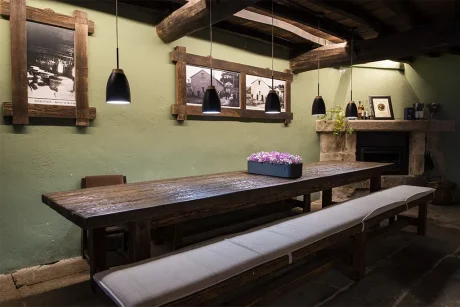The importance of machines for grinding cereals was one of the most significant technological achievements in the history of the human being.
Initially it began with machines moved by hand, then the work of animals was used and later it was replaced by the energy of water. This is the case of our Mill.
The Mill was built in 1873 by D. Francisco de Rudiño, also owner of the bridge that crosses the Umia River until reaching the Mill
The system is based on driving the water through four diversion channels that make the rod move when the water hits its blades. This rotating movement through an axis is transmitted to a stone that rotates (grindstone) on another fixed one (foot). The grain is dropped through a central hole in the grinding wheel into a wooden container placed on it.
It is important to remember the great importance that the mills had as a basis for food sustenance in a Galician economy based on subsistence agriculture.














